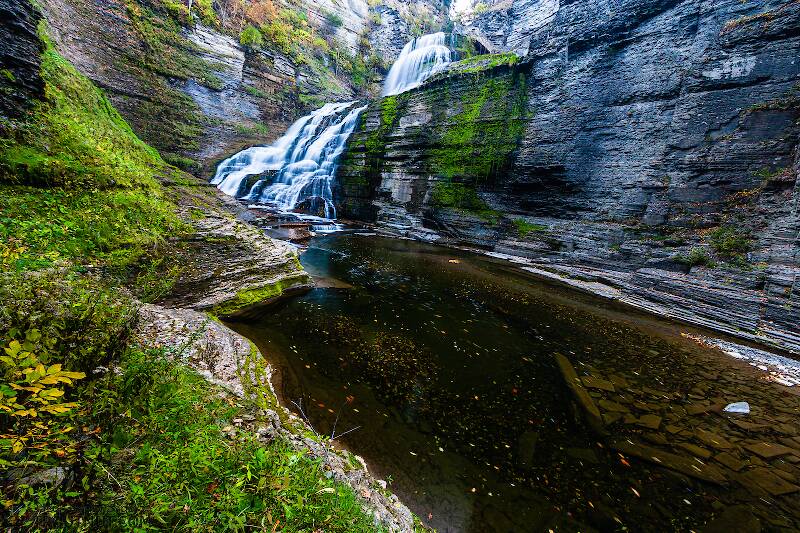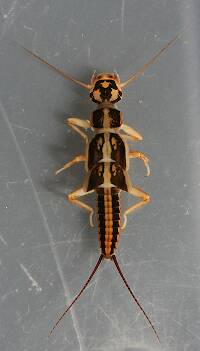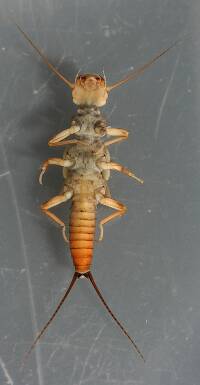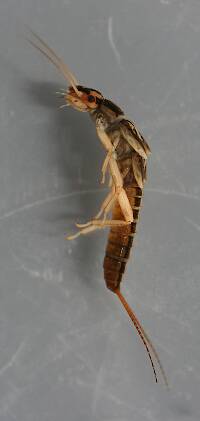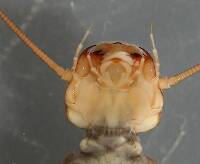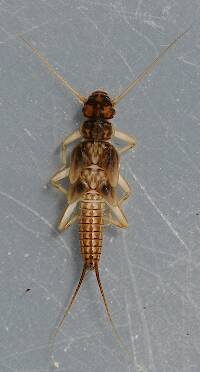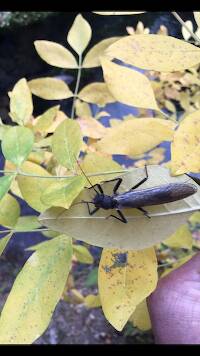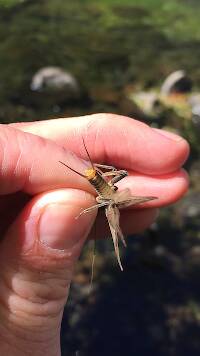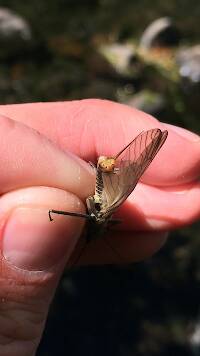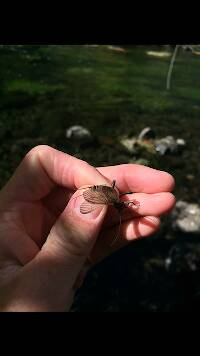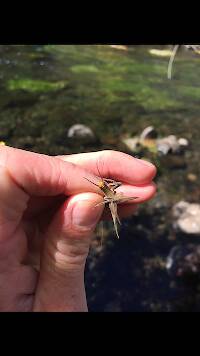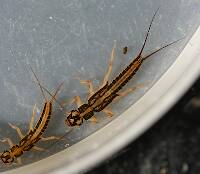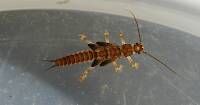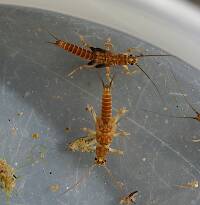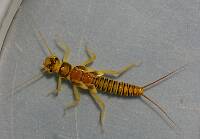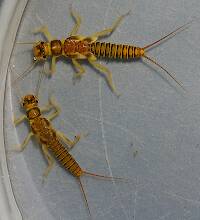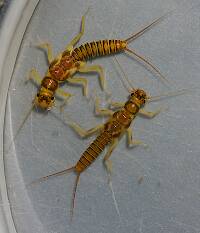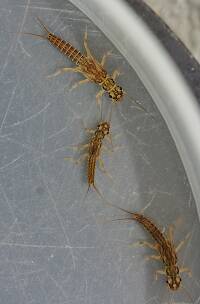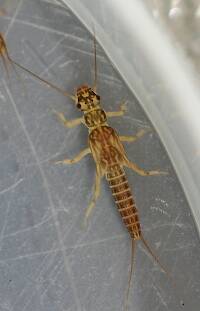
Blue-winged Olives
Baetis
Tiny Baetis mayflies are perhaps the most commonly encountered and imitated by anglers on all American trout streams due to their great abundance, widespread distribution, and trout-friendly emergence habits.
Featured on the forum

This is the first of it's family I've seen, collected from a tiny, fishless stream in the Cascades. The three species of this genus all live in the Northwest and are predators that primarily eat stonefly nymphs Merritt R.W., Cummins, K.W., and Berg, M.B. (2019).

Troutnut is a project started in 2003 by salmonid ecologist Jason "Troutnut" Neuswanger to help anglers and
fly tyers unabashedly embrace the entomological side of the sport. Learn more about Troutnut or
support the project for an enhanced experience here.

This stonefly species was the most common insect over the small stream I fished one August afternoon; I saw dozens in their egg-laying flights.
GONZO on Sep 9, 2008September 9th, 2008, 1:01 pm EDT
I don't think this is Isoperla or even a perlodid. The little perlids of the genus Perlesta are frequently mistaken for Isoperla. Although there are a few exceptions, most Eastern Isoperla are spring or early summer emergers. Perlesta tends to be more of a summer emerger. In general appearance, the amber, brownish, or blackish wings with yellow borders are common to many Perlesta species. The nearly concolorous pronotum (often with a similar rugose pattern) and the variable darkening of the ocellar triangle are also typical of many species in this genus. Looking closer, the third photo shows long bristles along the lower front edge of the forefemur. As far as I know, these bristles are found in perlids and chloroperlids, but not in Isoperla.
Quick Reply
Related Discussions
Topic
Replies
Last Reply
0
Feb 21, 2018
by Millcreek
by Millcreek
4
May 11, 2017
by Millcreek
by Millcreek
14
Nov 27, 2011
by Mad4Trout
by Mad4Trout

